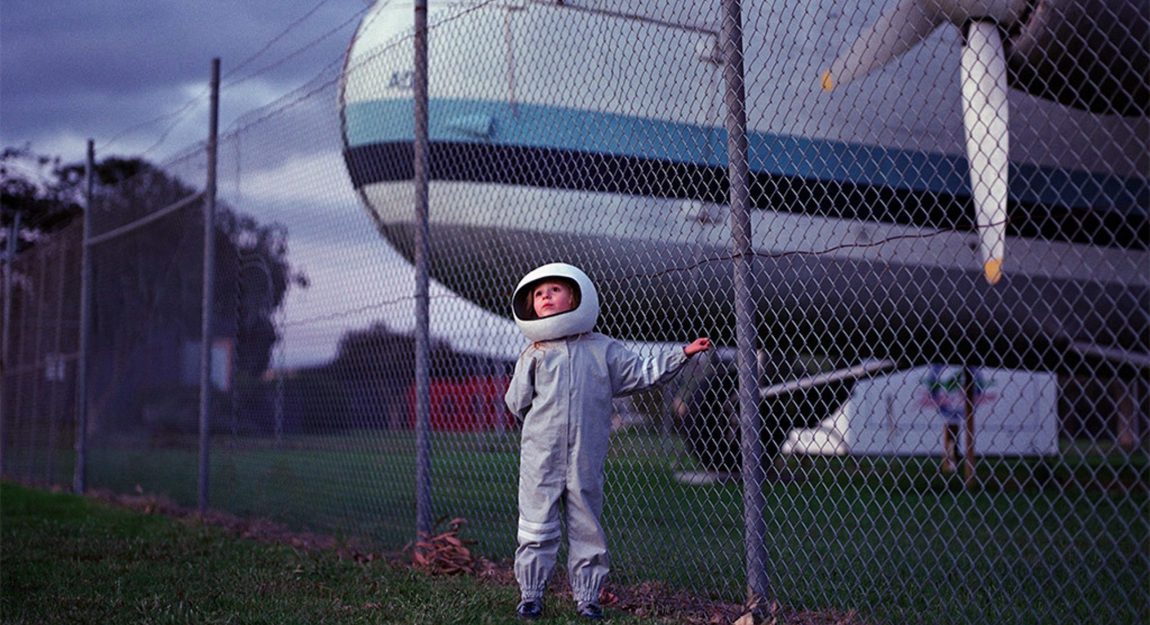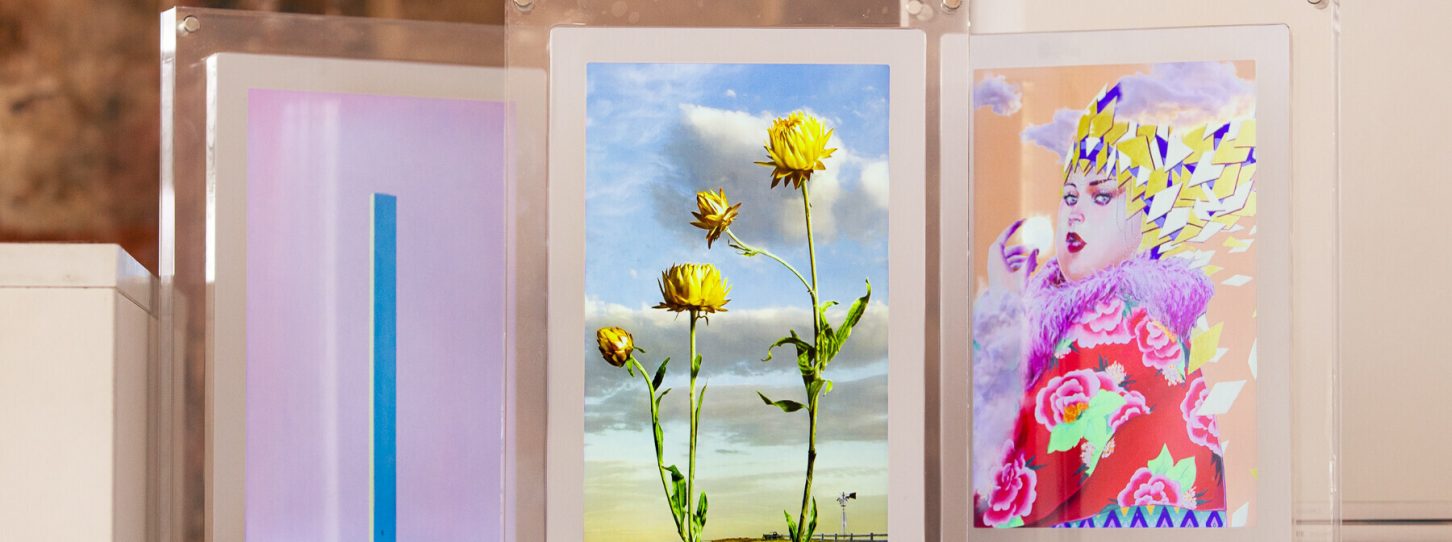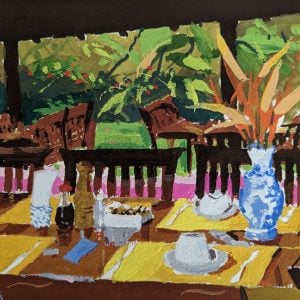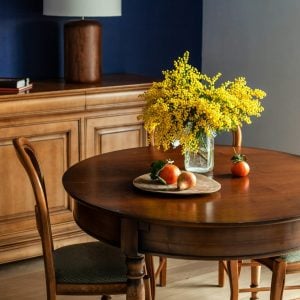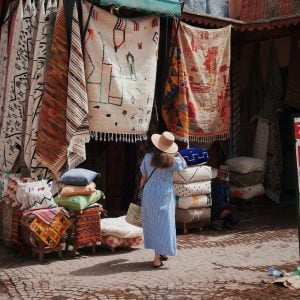Andrew Rovenko: The Artist Behind the Iconic Rocketgirl Series
The space-themed storylines created by photographer Andrew Rovenko have fast become iconic, endearing keepsakes of Melbourne’s most difficult times. Together with his wife Mariya and his four year-old daughter, they transformed their backyard into a station of exploration and discovery. It led to Andrew Rovenko taking home the Photography Runner-Up award in last year’s Bluethumb Art Prize, as well as gaining widespread recognition for bringing a sense of reprieve to the city’s lockdown languish.
With the launch of Bluethumb Digital just around the corner, Andrew Rovenko is also releasing NFTs from his revered Rocketgirl series as part of this month’s Genesis Drop. The Genesis Drop will be our first – and most important – collection as any Genesis artwork held will give the owner priority access to future collector pieces in Bluethumb Digital drops, plus other exciting benefits across Bluethumb’s physical and digital offerings.
We spoke with Andrew on where the inspiration for this candid series came from and his thoughts on the upcoming Digital drop.
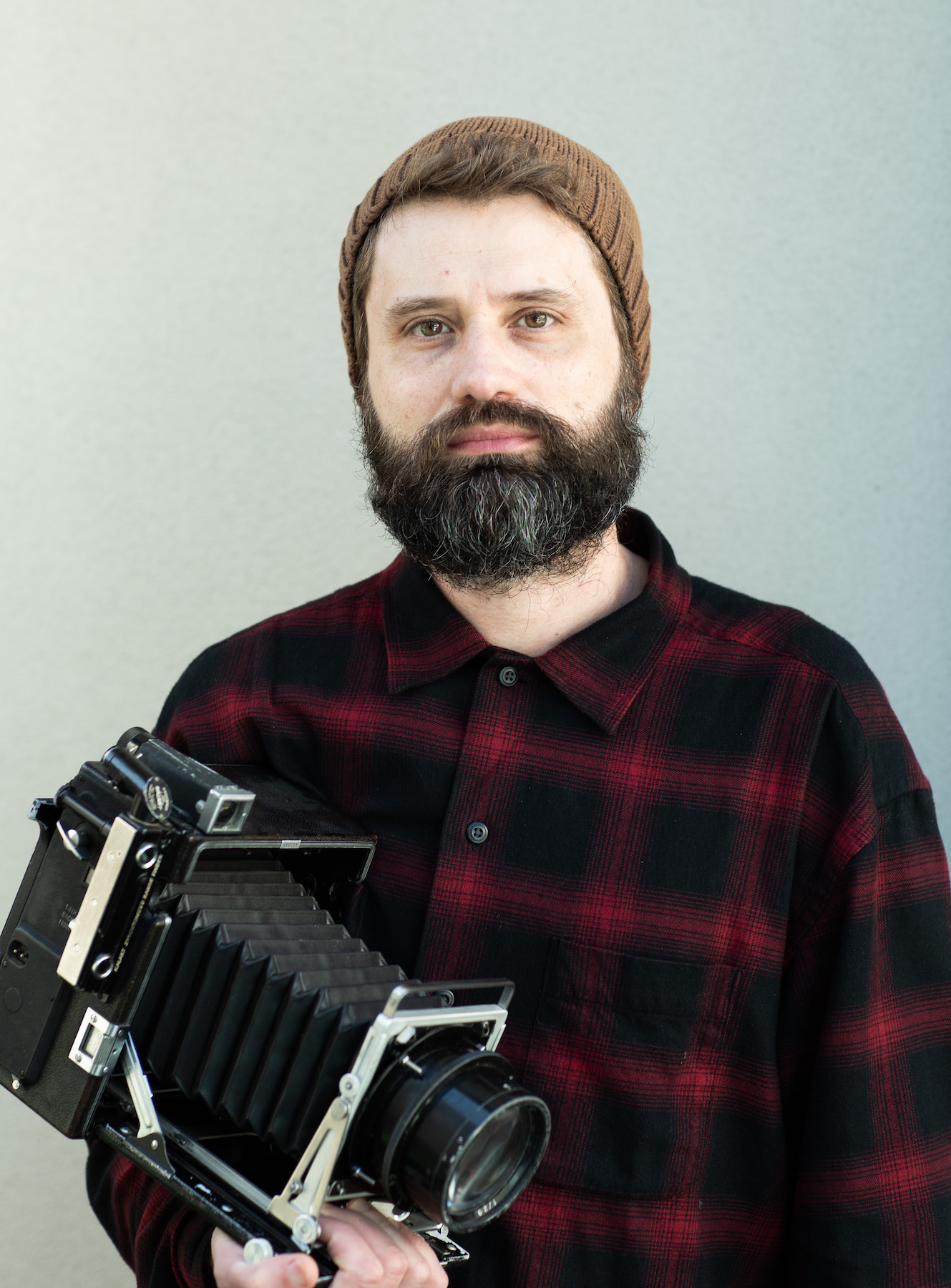
With his old Mamiya in hand, photographer Andrew Rovenko quickly met recognition in the Australian art scene with his Rocketgirl series.
How did your creative practice come about? Have there been many formative moments throughout your practice so far?
Distilling roughly 20 years into formative moments is a tough challenge, but let’s give it a shot.
1) When the head of design at one of my first jobs re-classified me as a staff photographer after seeing my amateur shots. I really don’t think they were any good, but this move suddenly resulted in a whole new “professional capacity”.
2) Becoming a freelance photographer for a local lifestyle and culture magazine. Getting free access to all gigs and events is an absolute dream when you’re in your early 20s. But this job came with one unexpected benefit – it gave the experience of shooting all sorts of assignments in all sorts of situations, and this proved to be the best practical school ever.
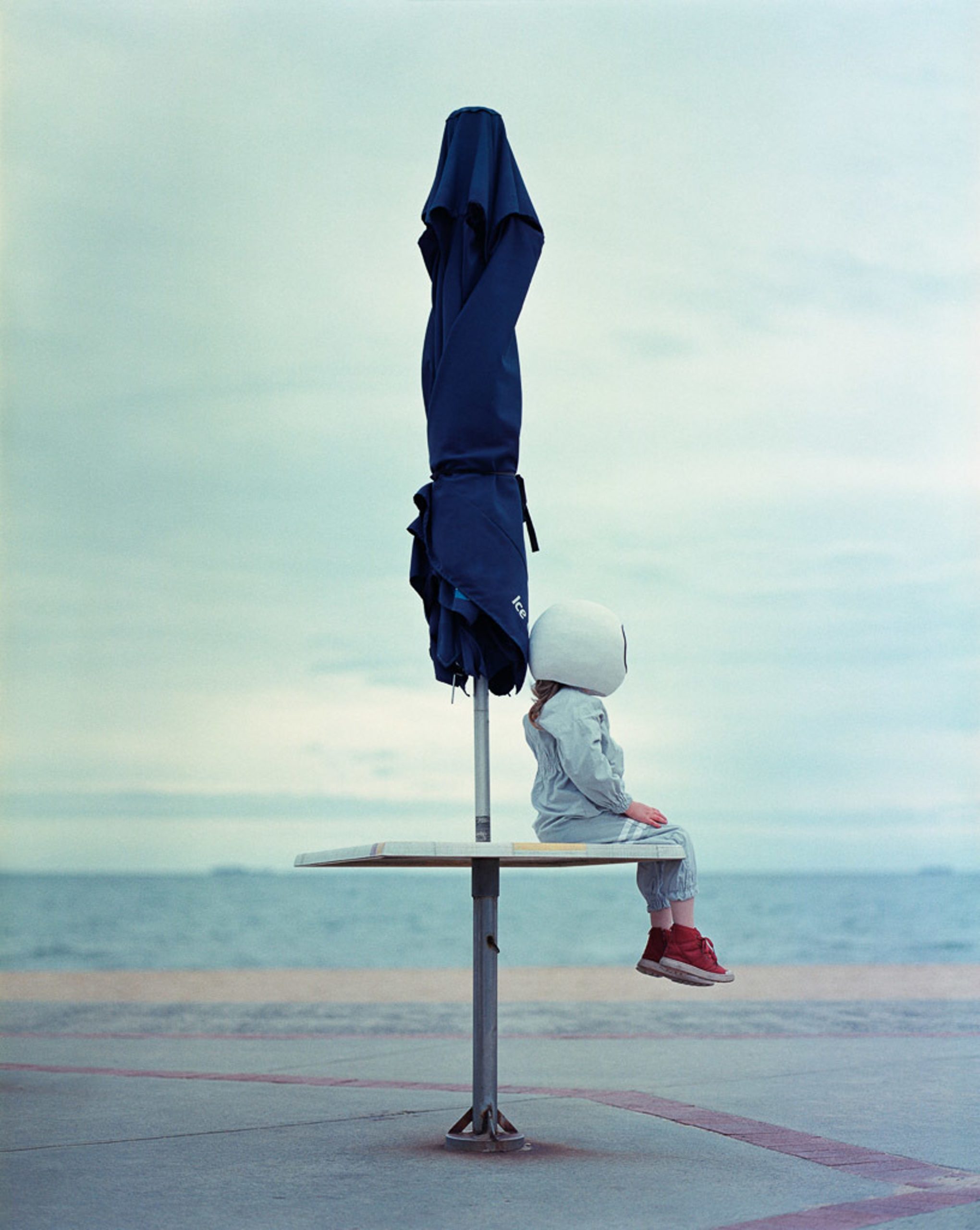
Off Season perfectly encapsulates the unearthly, somewhat apocalyptic feel of the sixth lockdown during the the colder and quieter Melbourne months.
3) Getting into the Large Format. This is one thing that really changed my approach to photography, not mentioning the huge learning curve that came with it. At some point it became a bit of an obsession, as I ended up making my own crude shutters for ancient barrel lenses (thank you Bunnings plumbing aisle), or bought a WWII aerial surveillance camera just to adapt its glass and see what can be done with it. When you’re stripped naked of all the technological advantages of the past 100 or so years and only have a box with primitive lens on one side and a sheet of film on the other – there’s nowhere to hide and you just have to take responsibility for every bit of it, which ultimately leads to much better understanding of the craft as a whole.
4) Shooting the Rocketgirl chronicles. This is definitely the latest formative moment that taught me maybe not so much about the technical aspects of photography (with this series I stepped back into the medium format, which now feels almost like cheating), but more about the perception of the world around us and the stories that we can find there. And arguably this is the most valuable part of the progression, as whilst the technical aspects can be taught – this perception is what makes our individual artistry.
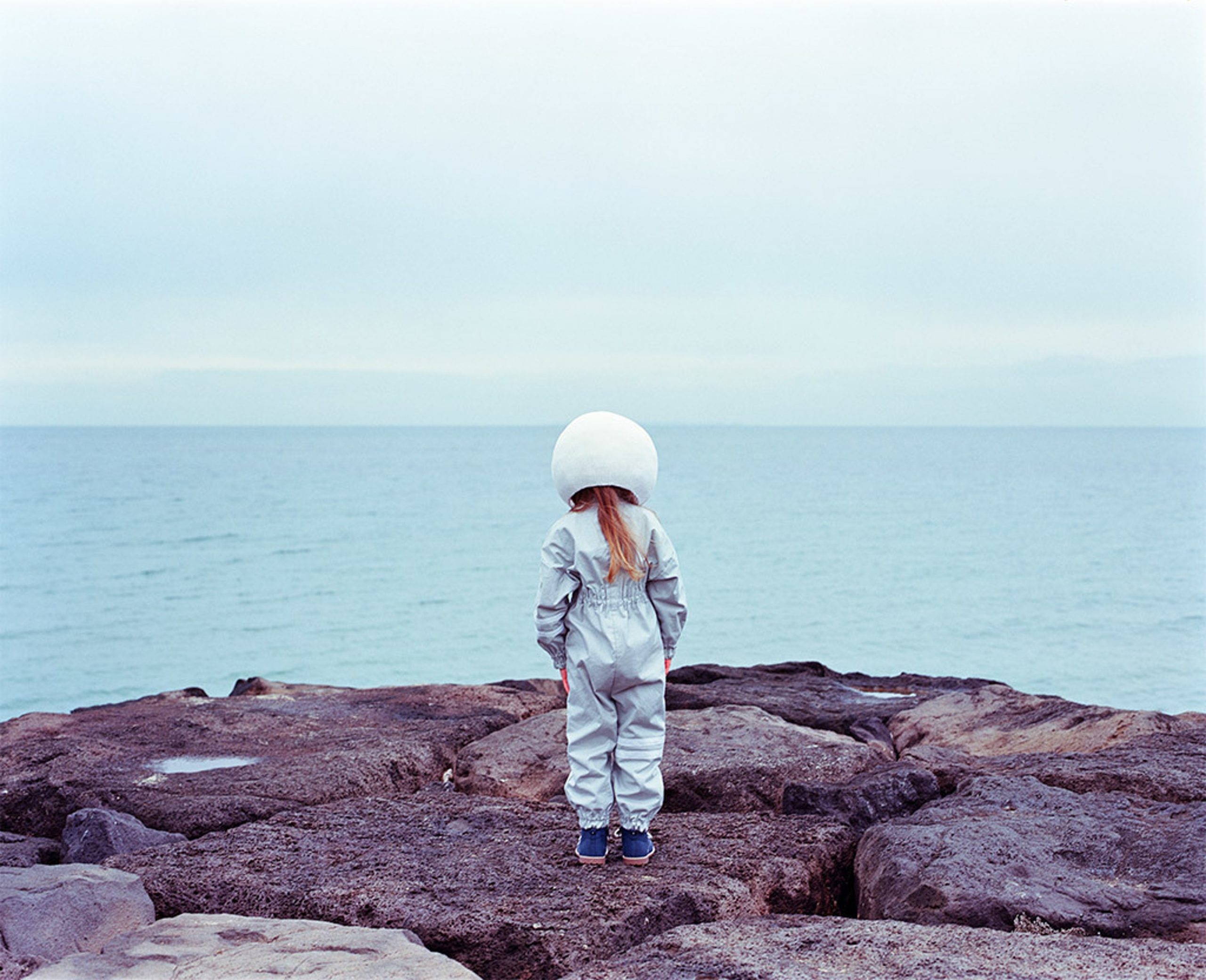
With a cool colour palette and a provoking composition, Rocky Shores is one of Andrew’s most popular photographs from the series.
What has influenced your journey in photography?
Being a fairly curious person with a short attention span, it feels like my influences are a tapestry of micro moments and encounters with the work of others. [The] unexpected has the power to influence, but only for that one moment. Once we become familiar with the unexpected, it becomes predictable and loses its magic.
Every unexpected good shot provides a new outtake and influences what I’ll keep in my toolbox for the future. Every unexpected bad shot gives an even bigger outtake and opportunity for further experimentation. Every new piece of work that surprises in some way – leaves a mark. One particular artist that comes to mind (and whose works I discovered rather late) is Sally Mann, and her Immediate Family series. It’s still a bit of a mystery to me how it was possible to create such artistic documentary images, especially on the equipment that she used.
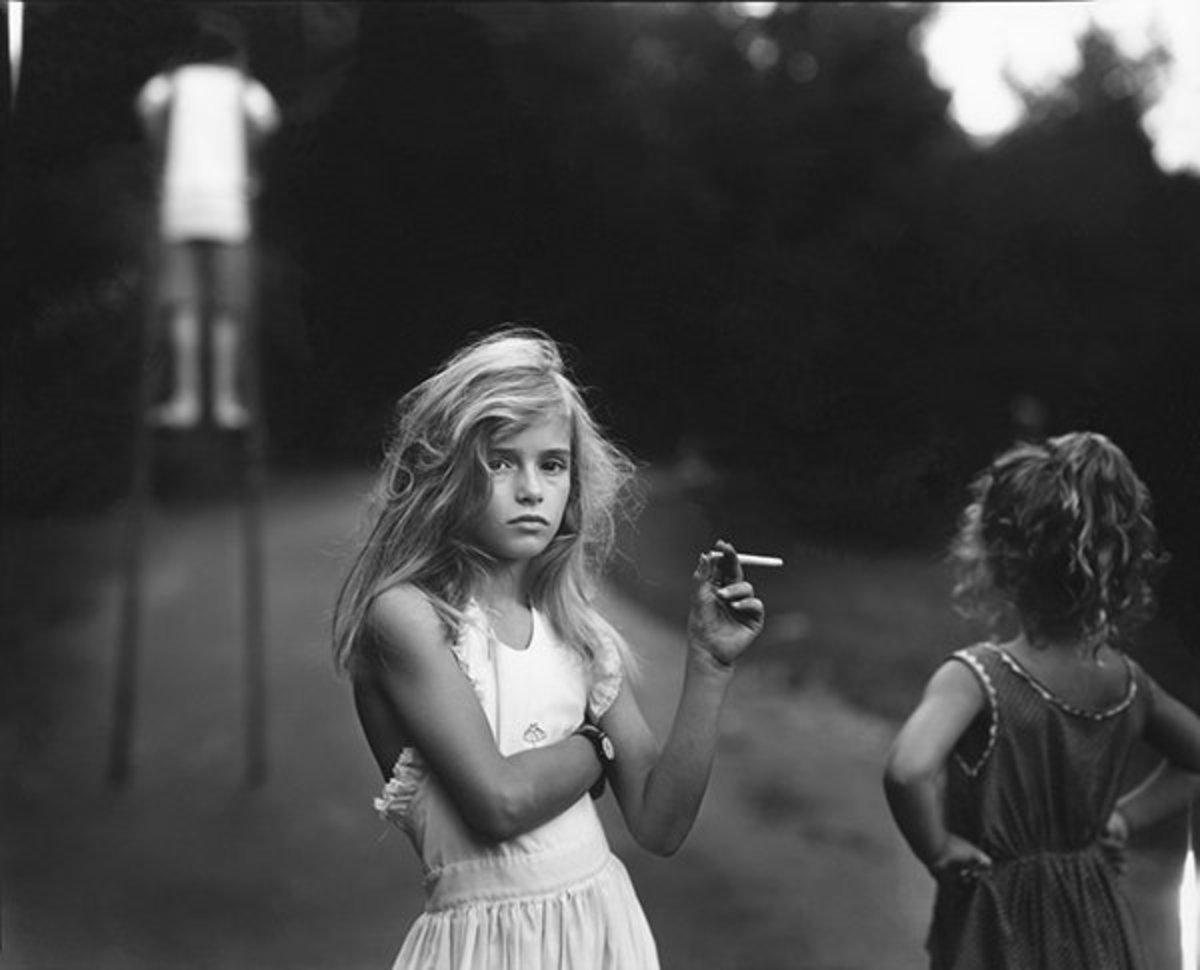
Candy Cigarette is arguably Sally Mann’s most prolific work from her series Immediate Family.
You’ve soared to acclamation this past year with your Rocketgirl series. Can you tell us about what inspired this series? How has this experience been for you?
It’s been a very surreal ride and extremely humbling experience, especially since this series started just as a little family past time, and I could never imagine for these images to be seen so widely and resonate with so many people all around the world. What we thought were just our own feelings in these strange times, and what got reflected in these photographs turned out to be something a lot more universal, and it seems to have really struck the chord with many personal experiences far beyond home.
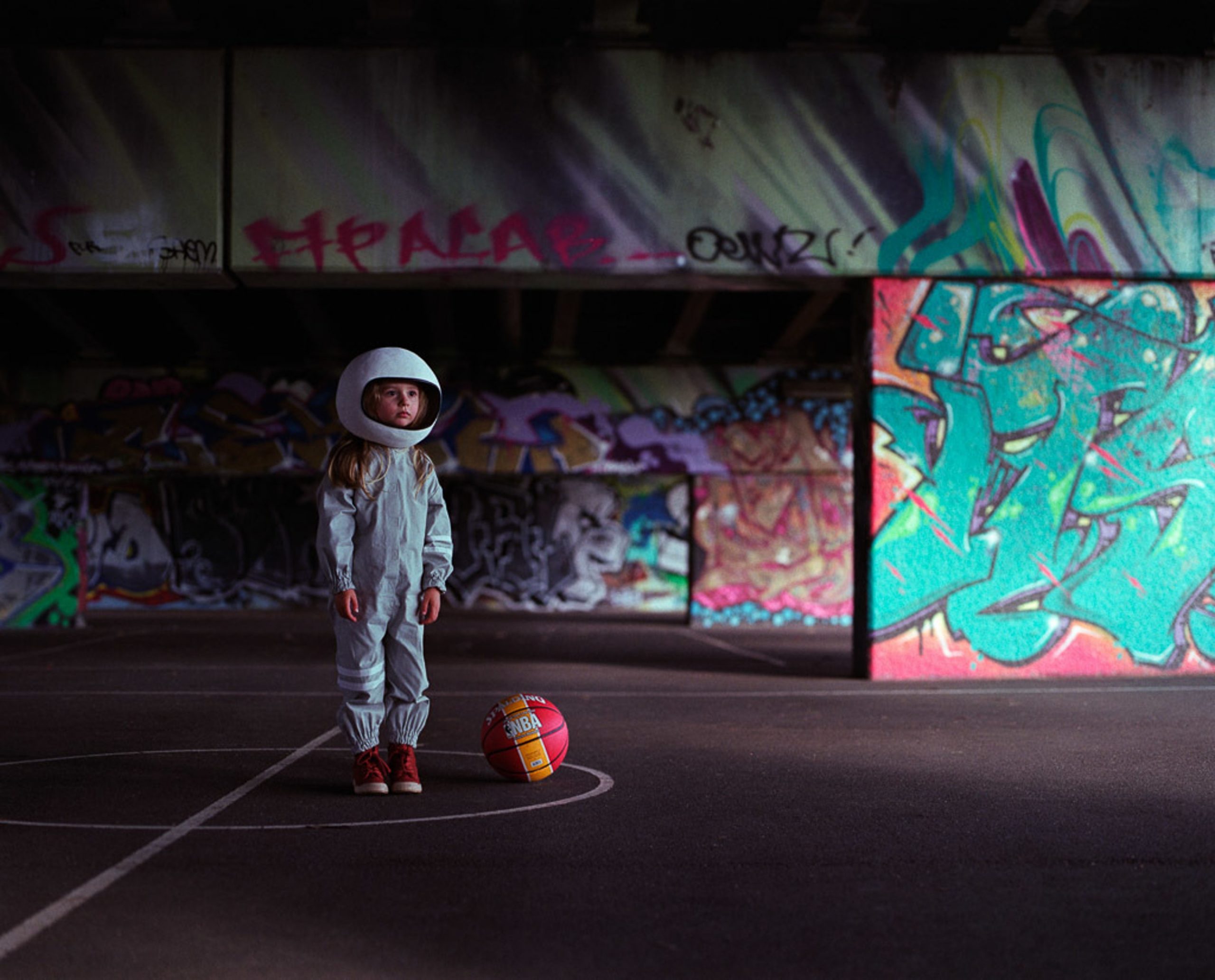
In a stature of isolation, Lonely Games is an image many of us can eerily relate to.
And ever more so – it seems to have inspired more art, which was quite mind-blowing to see once people started sharing their own creations influenced by this series – from traditional drawings, to digital art to even a little stage performance production out of Brazil.
As for our own inspiration – it’s definitely my daughter, who has the power to dream and turn the mundane world around us into something a lot more magical. She keeps reminding me that we all used to be able to do it when we were kids, and I’m just trying my best to document it, and limitations of last year’s lockdowns served as a trigger to make us explore it in depth.
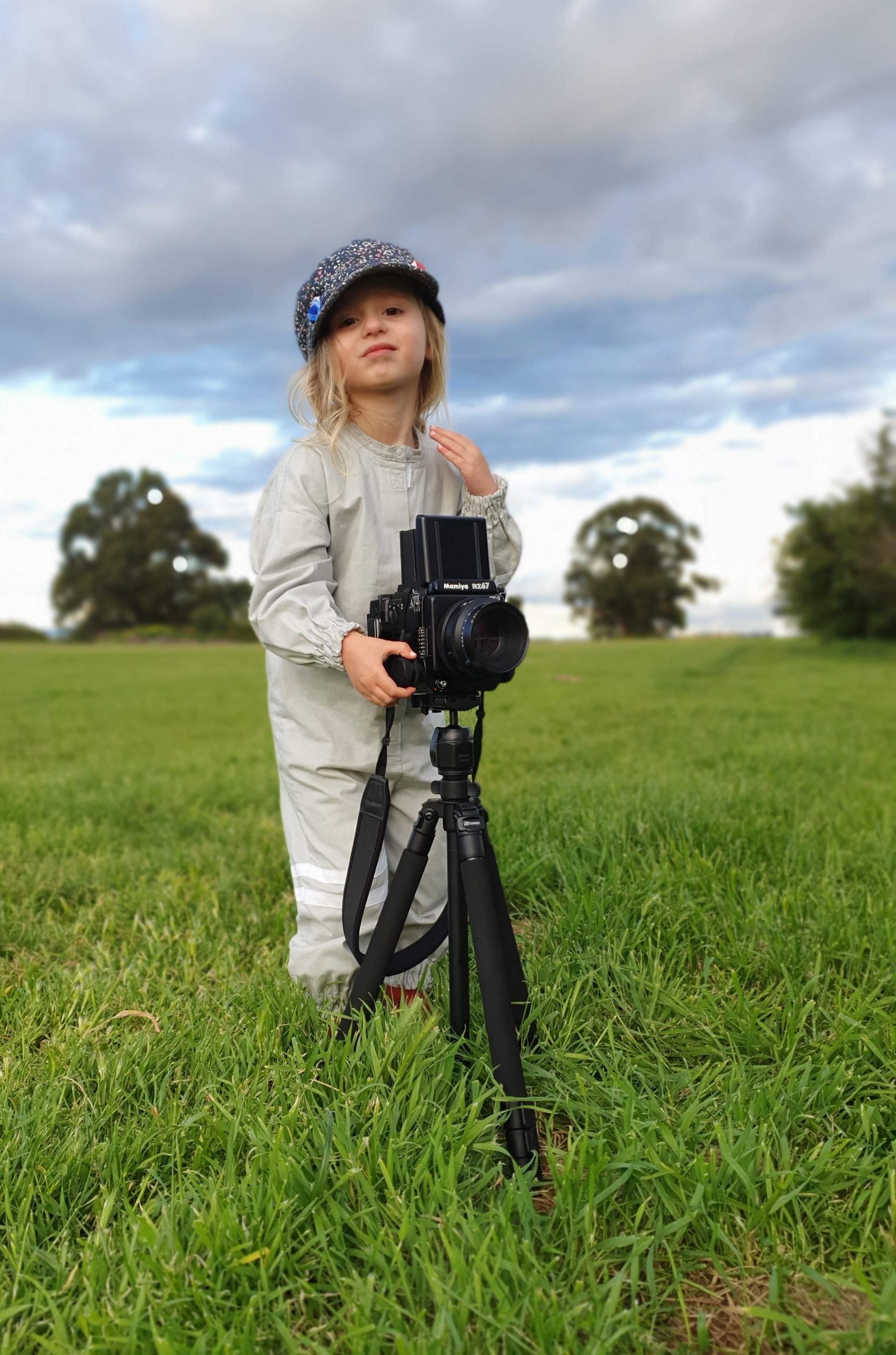
Meet Andrew’s assistant and the Rocketgirl herself, Mia Rovenko! Mia often has creative input into the photographs and gets involved behind-the-scenes.
You’ll soon be joining Bluethumb Digital in our Genesis Drop of NFTs. What interested you in pursuing the world of NFTs?
The title of my day job is “Creative Technologist”, which probably doesn’t mean anything to anyone, but essentially I get to learn and play with whatever is currently happening in the digital world, and with some luck – sometimes even build things of various degrees of usefulness.
And NFTs are undoubtedly one of the biggest things that have been happening in the digital world for quite a while now. All of this combined with the above mentioned curiosity makes the perfect reason to get involved.
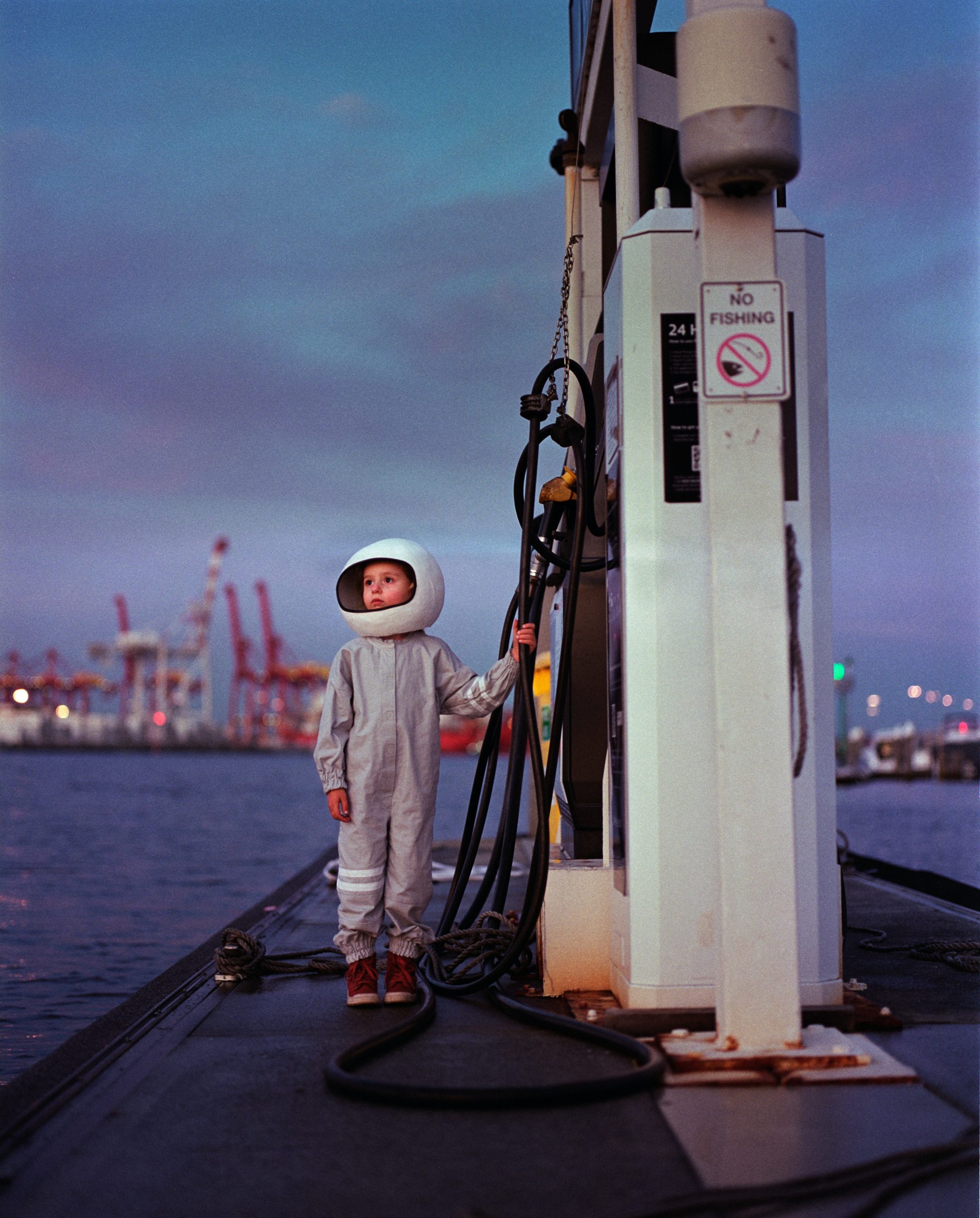
A technically stunning yet conceptually celestial image, The Mariner Mission came in as the Runner Up of the Photography award in last year’s Bluethumb Art Prize.
I’m quite aware of the NFT scene being a bit of a “Wild West” at the moment, with a lot of market activity driven by speculation and rather questionable practises (as well as some technological challenges). But at the same time, with more and more reputable art dealers joining in with quality curated collections and the technology evolving as well, it’s really interesting to see what the natural progress of the digital art scene will bring, and I’m keen to follow this journey “hands on”. As for Bluethumb Digital – it seems to address some of the drawbacks that currently exist on the other platforms, and being represented locally it makes for a much more comfortable fit.
What hopes do you have for the year ahead with your artistic practice?
If there’s anything that the past two years have taught me – it’s to take one day at a time and just keep going.
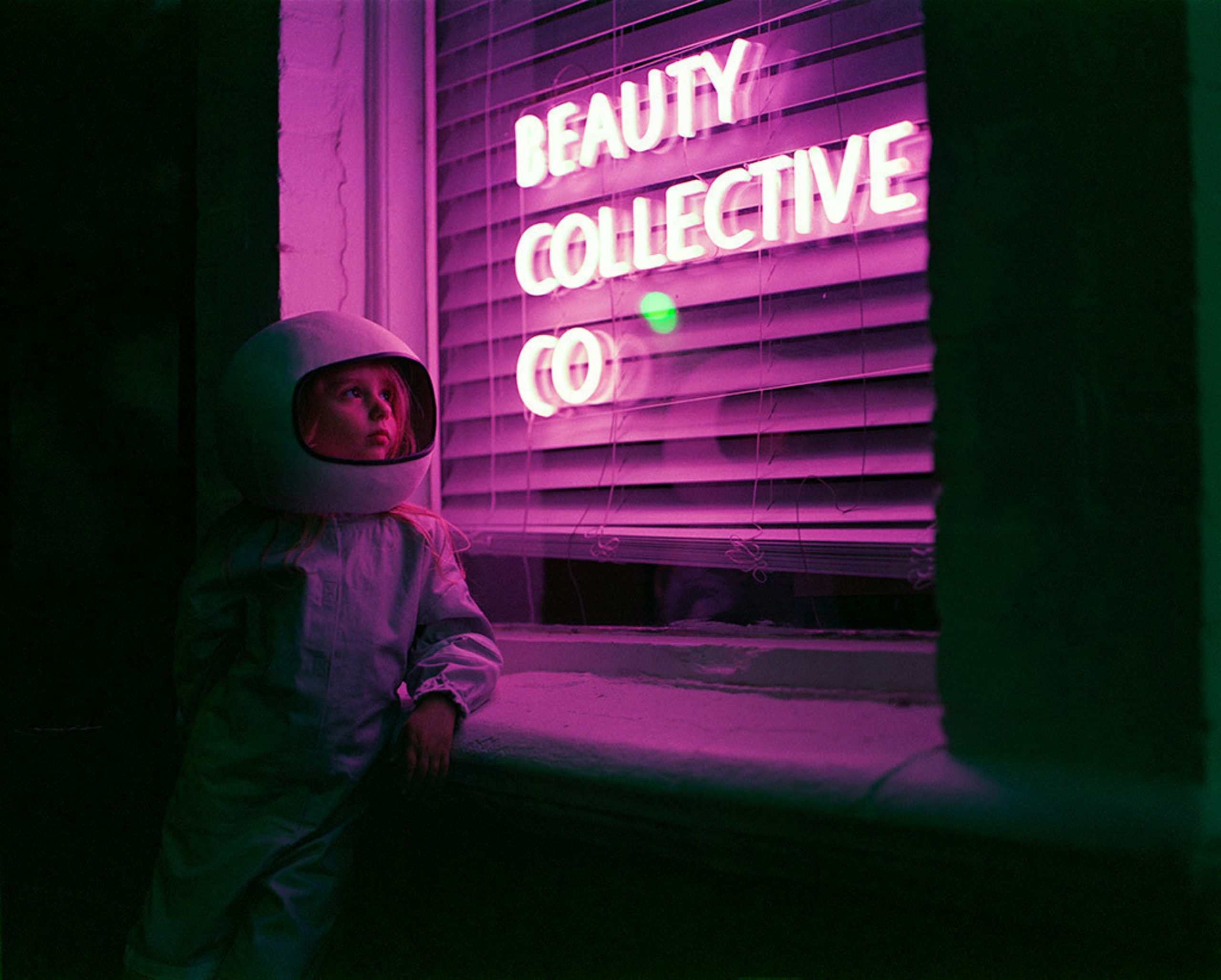
Neon #2 by Andrew Rovenko.
Take a further look into Andrew’s awe-inspiring work on his profile. Want to hear more about Bluethumb Digital and NFTs? Click here to find out everything you need to know.

